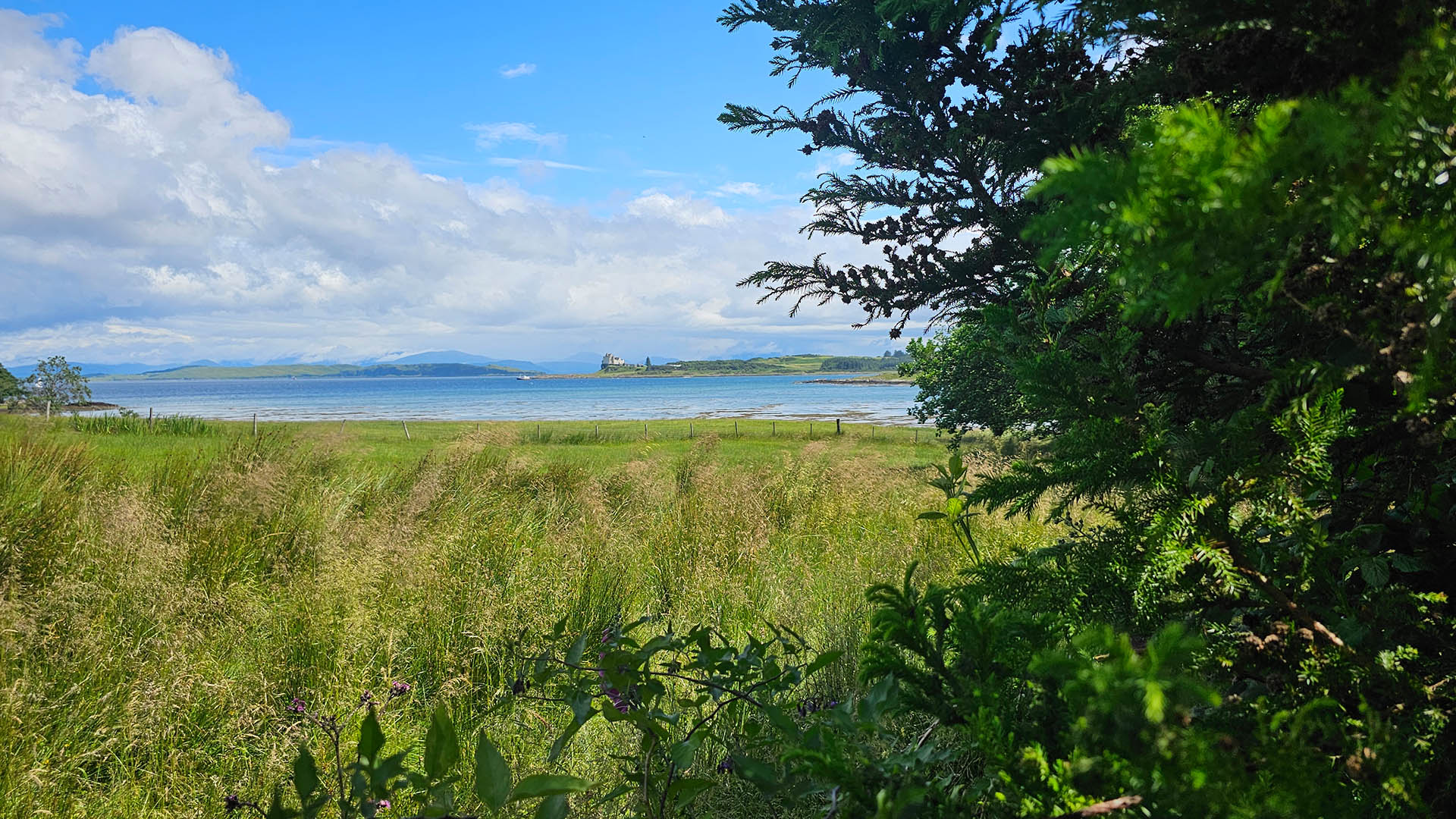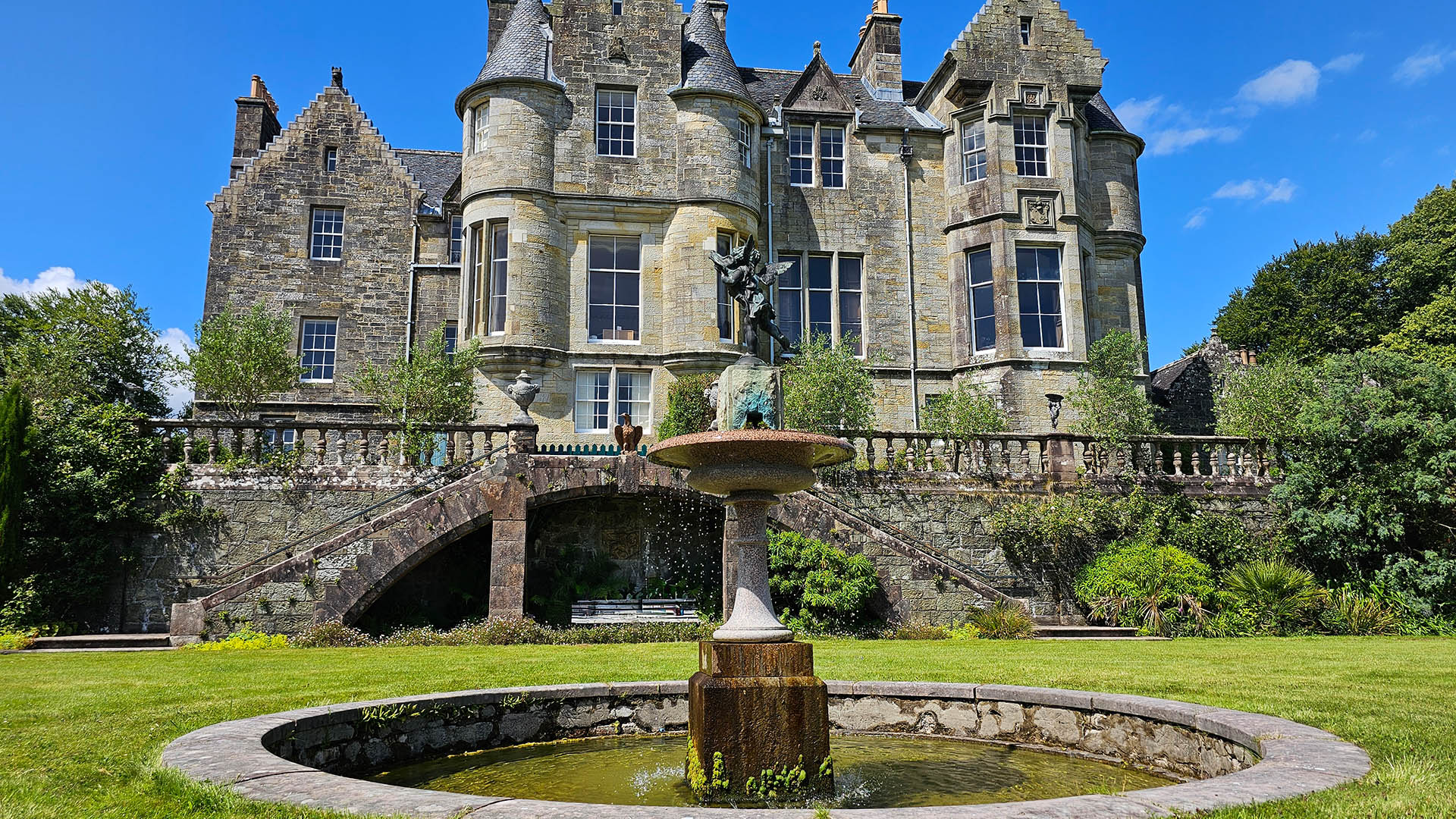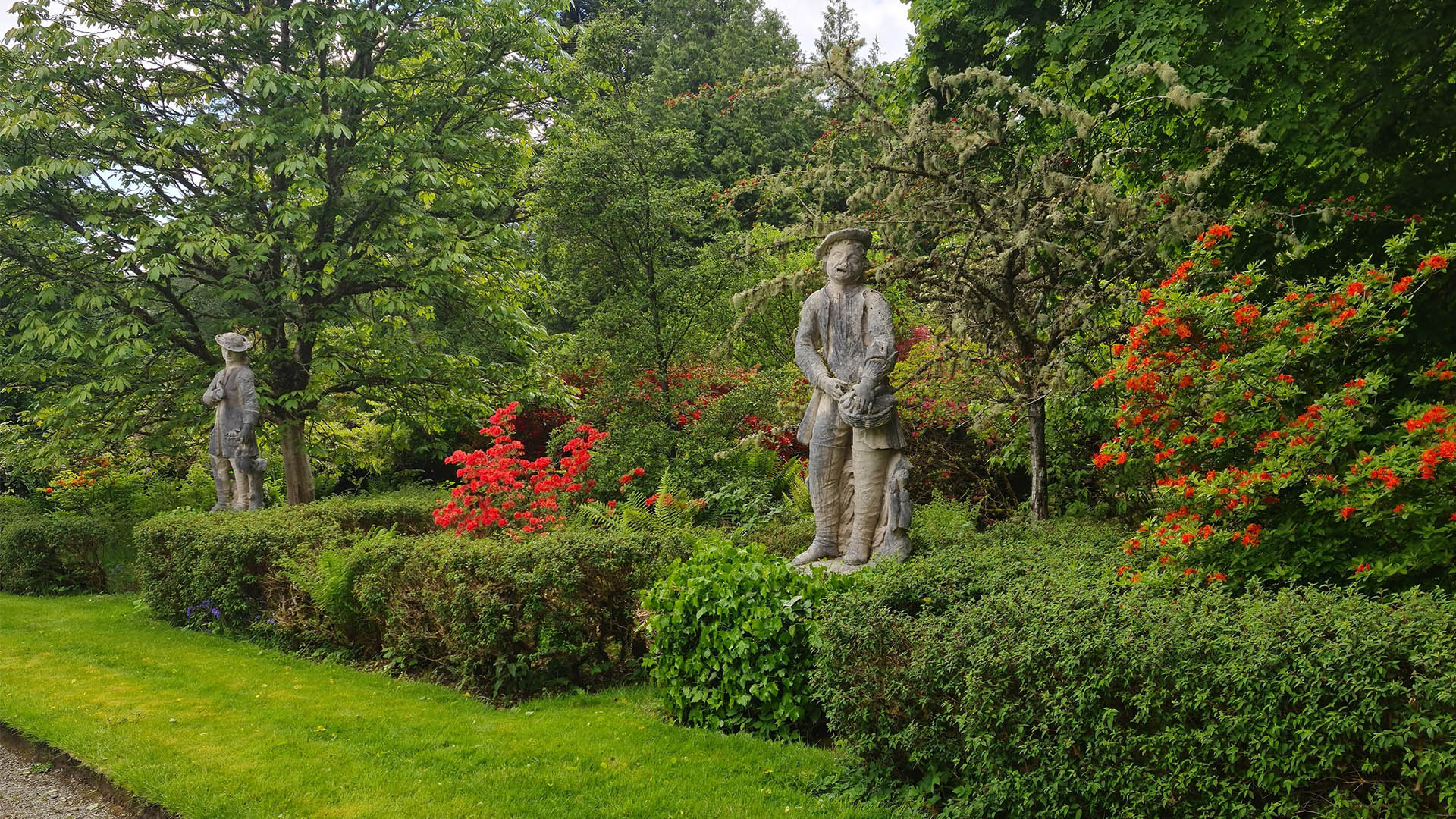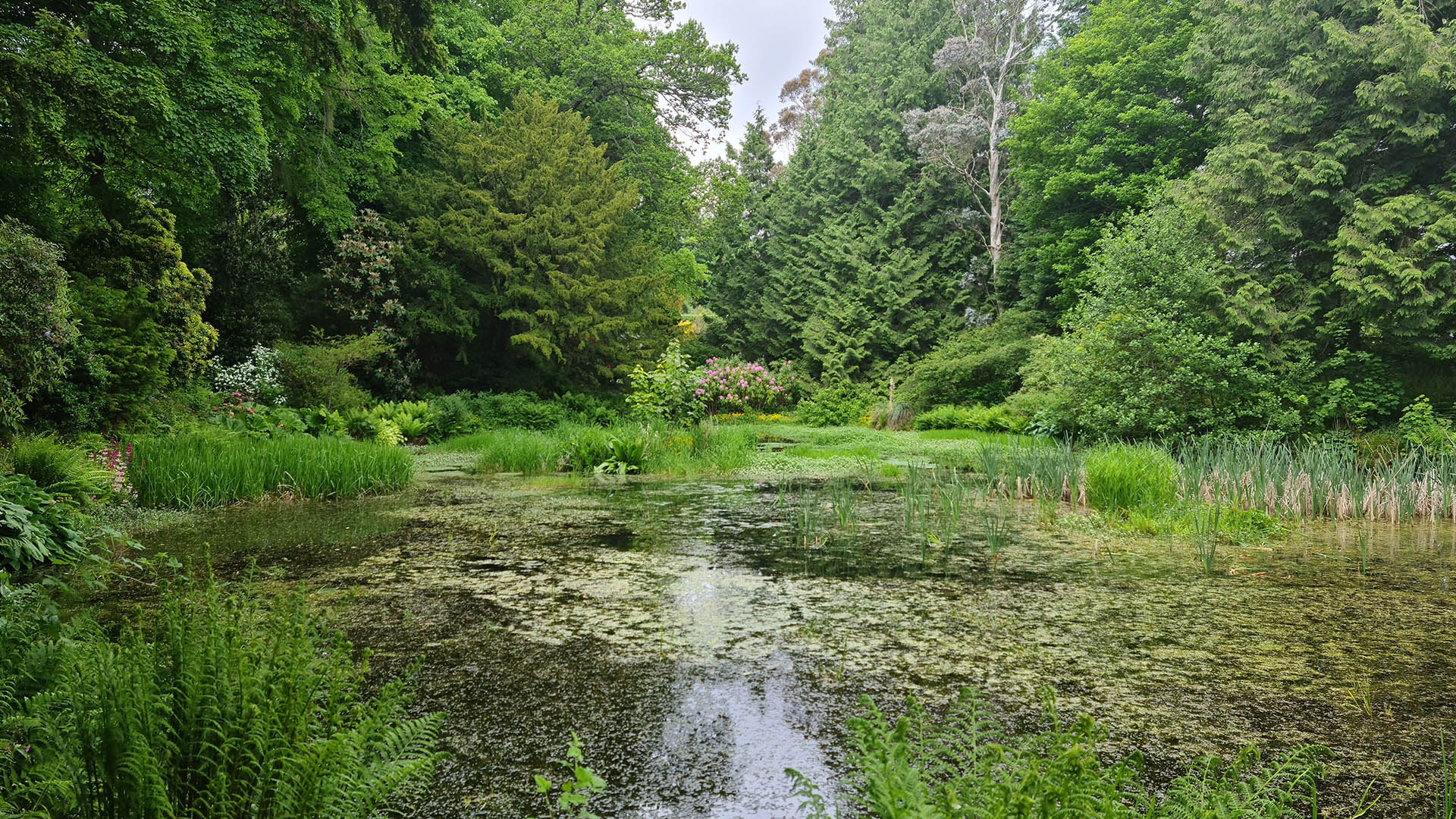
The sweeping view from Torosay Castle’s gardens looks out across the Sound of Mull to the historic Duart Castle on the opposite shore.
Location and Setting
Just south of Craignure, on a rise above the Sound of Mull, Torosay Castle commands one of the most picturesque spots on the island. From its terraces, the view sweeps across the water to Duart Castle, creating a striking visual link between two very different but equally fascinating historic homes.
A Brief History of the Estate
Long before the present building took shape, the land belonged to the abbots of Iona. It later passed to the Macleans of Duart and, after political upheaval in the late seventeenth century, to the Campbells. In the early eighteenth century, the Campbells built a Georgian house named Achnacroish, with a walled garden and farm buildings that still survive behind the current castle.
In 1850, John Campbell of Possil inherited the estate and commissioned the celebrated architect David Bryce to design a new home. Completed in 1858, the castle blended Scottish Baronial architecture with a French château-inspired south front, an unusual combination that gave it both strength and refinement. Inside, visitors of the time would have admired grand reception rooms, ornate plaster ceilings, and heraldic fireplaces, all lit by gas supplied from an on-site gasometer.

Torosay Castle in the background with the fountain and cherub statue gracefully framed in the foreground.
The Owners and Their Legacy
The estate changed hands in 1865, when Arbuthnot Guthrie purchased it and began shaping the grounds into the gardens seen today. Guthrie also imported nineteen life-size statues from northern Italy, creating the famous Statue Walk. His descendants continued to maintain the gardens, welcoming an array of distinguished guests, from Winston Churchill to King George of Greece.
In 1911, the castle, then largely a ruin, was sold to Sir Fitzroy Maclean, who arranged an extensive restoration, reviving the estate’s grandeur and preserving it for future generations.
As of 2017, the castle is owned by Madame von Speyr and houses the Dew Cross Centre for Moral Technology, continuing the legacy of this historic estate.

The beloved lion statues at Torosay Gardens— a favorite spot for kids to admire and explore.
The Gardens: A Living Attraction for Visitors
Today, the gardens are the main draw for anyone coming to Torosay. Covering around twelve acres, they showcase an extraordinary range of plants thanks to Mull’s mild Gulf Stream climate. Formal terraces step down towards the sea, their stone balustrades draped with climbing roses and seasonal blooms. Below these terraces lies the Statue Walk, shaded by mature trees and lined with Italian sculptures that seem to watch silently over the path.

Elegant life-size statues imported from northern Italy around 1900 line the shaded Statue Walk, adding timeless charm to Torosay Castle’s gardens.
Wander deeper and you will find a woodland garden where a still pool reflects the surrounding greenery. In spring, candelabra primulas form a colourful carpet around its edges. The alpine and rock gardens are alive with mountain species carefully arranged among sculpted scree, while the rhododendron collection bursts into flower in late spring, some varieties so rare they draw keen gardeners from far afield.

A tranquil still pool nestled within the woodland garden reflects the lush greenery and seasonal blooms surrounding it.
There is also a Japanese garden, where carefully placed stones and water features create a peaceful corner for reflection. A eucalyptus-lined walk follows the edge of the estate, leading to the old walled kitchen garden, now a space for experimental planting. The bog garden, glasshouses, and seasonal displays add to the variety, meaning that no matter what time of year you visit during the open season, there is something in bloom.

Intricately carved wooden fish detail adds a touch of artistry and serenity to the peaceful Japanese garden at Torosay Castle.
Visiting Torosay Today
The castle itself remains a private residence and is not open to the public. However, the gardens open on the first Sunday of each month from April to October. Visitors can reach them by a gentle woodland walk from Craignure or make use of the limited parking available on site.
For those who time their visit right, Torosay’s gardens offer one of the most rewarding outdoor experiences on Mull. They combine formal design with natural beauty, historic charm with living colour, and a sense of tranquillity that lingers long after you leave.
A Toast to History: The Oldest Champagne Bottle
In 2008, a pristine bottle of 1893 Veuve Clicquot champagne was discovered in the castle, now recognised as the oldest surviving bottle of its kind. These small details give Torosay a touch of romance and eccentricity that matches its grand surroundings.
